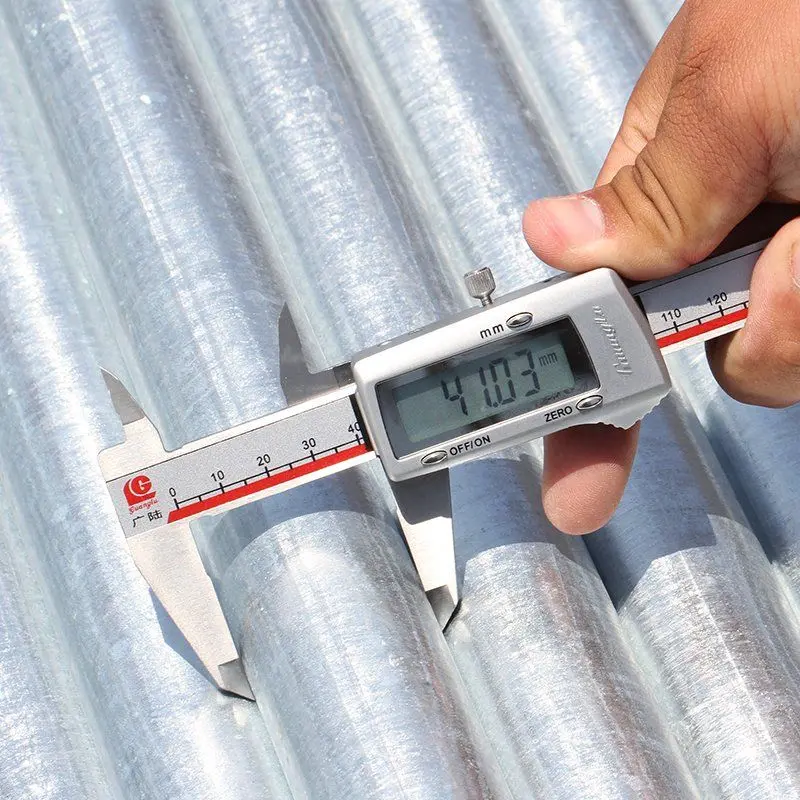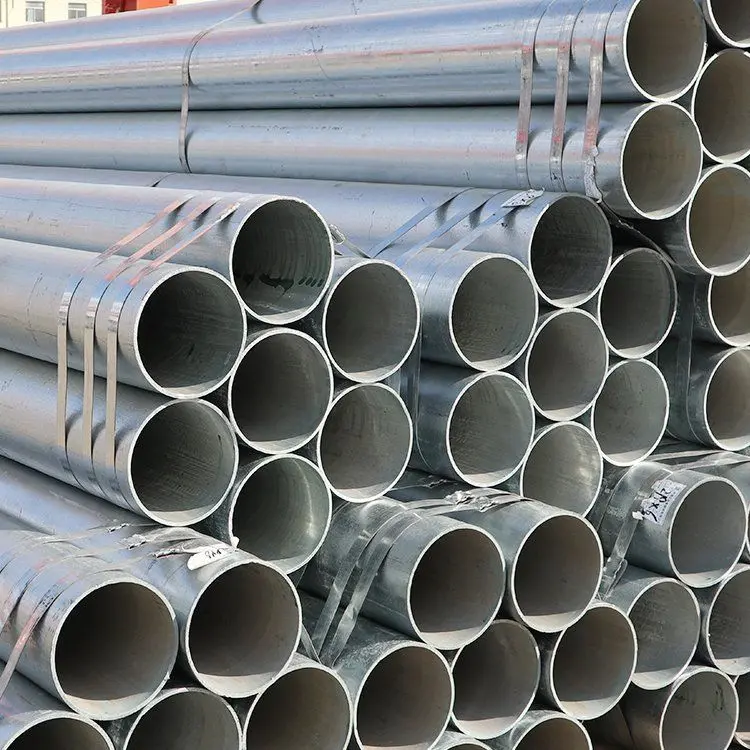Galvanized steel pipe: a "technological revolution" of traditional materials, empowering a new era of green infrastructure
Hot dip galvanized pipesare galvanized on general Steel Pipes to improve their corrosion resistance. Galvanized steel pipes are divided into two types: hot-dip galvanizing and electroplating galvanizing. Hot dip galvanizing has a thick galvanized layer, electroplating galvanizing has a low cost, and the surface is not very smooth.


Nominal wall thickness: mm2.0, 2.5, 2.8, 3.2, 3.5, 3.8, 4.0, 4.5;
Coefficient: c1.064, 1.051, 1.045, 1.040, 1.036, 1.034, 1.032, 1.028.
Note: The mechanical properties of steel are important indicators to ensure its ultimate performance (mechanical properties), which depend on the chemical composition and heat treatment system of the steel. In steel pipe standards, tensile properties (tensile strength, yield strength or yield point, elongation) as well as hardness and toughness indicators are specified according to different usage requirements, as well as high and low temperature performance requirements from users. Grade of
galvanized steel pipe: Q215A; Q215B; Q235A; Q235B
Test pressure value/Mpa: D10.2-168.3mm is 3Mpa; D177.8-323.9mm is 5Mpa
Galvanized steel pipes are divided into cold galvanized pipes and hot-dip galvanized pipes. The former has been banned, while the latter is still advocated for use by the country.
Hot dip galvanized pipe
Hot dip galvanized pipes produce an alloy layer by reacting molten metal with an iron substrate, thereby bonding the substrate and coating together. Hot dip galvanizing is the process of first pickling steel pipes. In order to remove iron oxide from the surface of the steel pipes, after pickling, they are cleaned in an ammonium chloride or zinc chloride aqueous solution or a mixed ammonium chloride and zinc chloride aqueous solution tank, and then sent to a hot-dip galvanizing tank. Hot dip galvanizing has the advantages of uniform coating, strong adhesion, and long service life. The steel pipe substrate undergoes complex physical and chemical reactions with the molten plating solution, forming a corrosion-resistant and tightly structured zinc iron alloy layer. The alloy layer is integrated with the pure zinc layer and the steel pipe substrate. Therefore, it has strong corrosion resistance.
1. Uniformity of galvanized layer: The steel pipe sample shall not turn red (copper plating color) after continuous immersion in copper sulfate solution for 5 times.
2. Surface quality: The surface of galvanized steel pipes should have a complete galvanized layer, and there should be no uncoated black spots or bubbles. Small rough surfaces and local zinc nodules are allowed.
3. Galvanized layer weight: According to the requirements of the demander, galvanized steel pipes can be used for zinc layer weight measurement, and the average value should not be less than 500g/square meter, with any sample not less than 480g/square meter.
Cold galvanized pipe
Cold galvanizing is also known as electroplating galvanizing, with a very small amount of galvanizing, only 10-50g/m2. Its corrosion resistance is much different from that of hot-dip galvanized pipes. Legitimate galvanized pipe manufacturers, in order to ensure quality, mostly do not use electroplating (cold plating). Only small enterprises with small scale and outdated equipment adopt electroplating, and of course, their prices are relatively cheaper. The Ministry of Construction has officially announced the elimination of technologically outdated cold galvanized pipes and prohibits the use of cold galvanized pipes as water and gas pipes in the future. The zinc layer is an electroplating layer, which is independently layered from the steel pipe substrate. The zinc layer is relatively thin and easily adheres to the steel pipe substrate, making it prone to detachment. Therefore, its corrosion resistance is poor. It is prohibited to use cold galvanized steel pipes as water supply pipes in newly-built residential buildings
purpose
The iron pipes used for gas, greenhouse, and heating are also galvanized pipes. Galvanized pipes, as water pipes, produce a large amount of rust and scale inside the pipes. The yellow water flowing out not only pollutes the sanitary ware, but also contains bacteria that breed on the uneven inner walls. Corrosion causes high levels of heavy metals in the water, seriously endangering human health. In the 1960s and 1970s, developed countries began to develop new types of pipes and gradually banned galvanized pipes. The Chinese Ministry of Construction and four other ministries have also issued a clear ban on galvanized pipes since 2000. Galvanized pipes are rarely used for cold water pipes in newly built residential areas, and some residential areas use galvanized pipes for hot water pipes.















